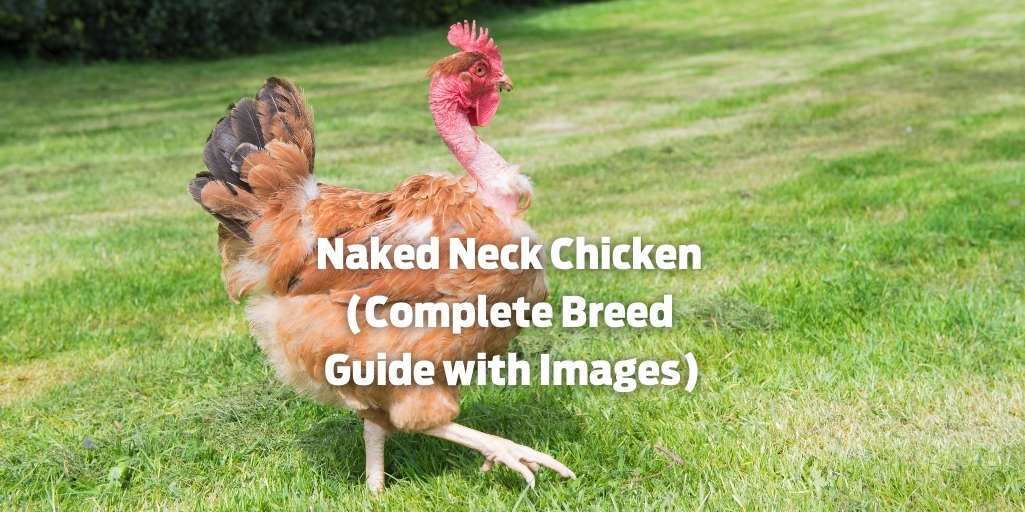The Bresse chicken breed (La Gauloise or Bresse Gauloise) is known for its high-fat, high-protein meat and eggs.
Bresse chickens are popular with poultry lovers and gourmet chefs due to their high-quality meat, beautiful appearance, and long heritage. Their soft, delicious meat and rich, bright yolks make them popular.
The origin, traits, benefits, and proper care of Bresse chickens are covered in this detailed breed guide.
History and Origin of Bresse Chickens
The Bresse chicken originated in the Bresse area of eastern France in the 16th century.
The breed was developed by mixing chickens of French origin with Asian varieties brought to Europe by explorers and traders.
The Bresse chicken is historically known as “the queen of chickens and the chicken of kings” because of its high-quality meat.
The French government awarded the first poultry appellation d’origine contrôlée (AOC) to the Bresse chicken in 1936 to guarantee its authenticity and high quality.
“Bresse” chickens must be raised in the Bresse area and meet strict breeding and production standards. To distinguish it from the French Bresse, the breed is called the “American Bresse” outside France.
Bresse Chicken Color Varieties
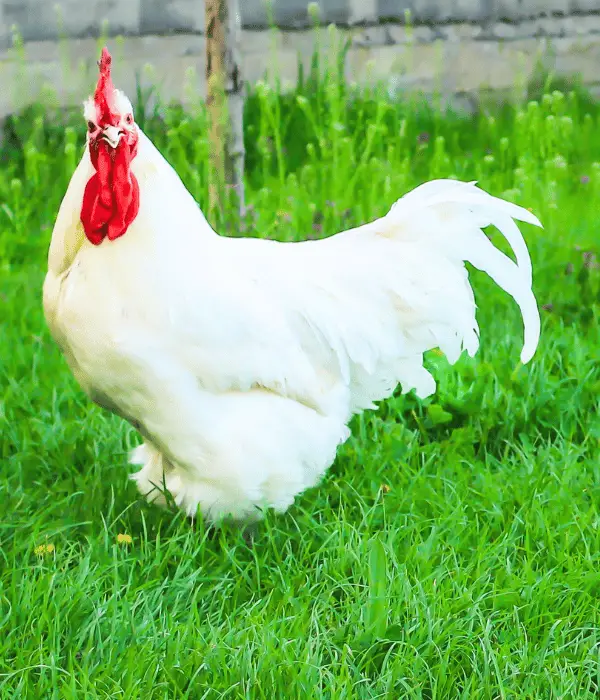
You can see Bresse chickens in white, black, blue, or gray colors. The White Bresse chicken is highly popular and raised by most poultry farmers.
Black Bresse chickens have glossy black feathers, while blue Bresse has slate blue feathers.
Finally, the Gray Bresse chicken (or “splash”) has blue and black feathers with white dots.
This makes them a little unique and rare. All four color varieties have the same physical and meat qualities. That is why choosing one depends on farmers’ preferences and flock beauty.
Lifespan of Bresse Chickens
Bresse chickens live longer than other poultry breeds. Depending on their nutrition, environment, and health, they can live 5–8 years.
Some can live up to 10 years if they are properly cared for.
However, Bresse chickens are raised for their meat, usually slaughtered at 4–6 months old. Thus, many Bresse chicks die in their cockerel and pullet ages.
Bresse Chicken Temperament
Bresse chickens are naturally energetic and welcoming, making them ideal for backyard flocks and small farms.
They are friendly chickens that like connecting with their owners. Bresse chickens are great foragers, which makes them perfect for free-ranging.
However, Bresse roosters may become violent, especially during breeding season.
Proper flock management and separating aggressive roosters and hens help control this type of situation.
Characteristics of Bresse Chickens
Bresse hens are medium-sized and interesting. Their thin, athletic form and long, blue legs distinguish them from other chicken varieties.
Their rich brown eyes, red comb, and wattles shine out. Bresse chickens lay white eggs and have white earlobes.
Bresse flocks are noted for their high-quality meat and unusual appearance because their meat is soft, delicious, and rich in taste.
The sturdy, almost game-like flavor appeals to culinary cooks and foodies.
The Bresse chicken’s feed and free-ranging lifestyle allow them to forage for a variety of natural food sources, giving their meat a unique flavor.
Advantages of Raising and Breeding Bresse Chickens
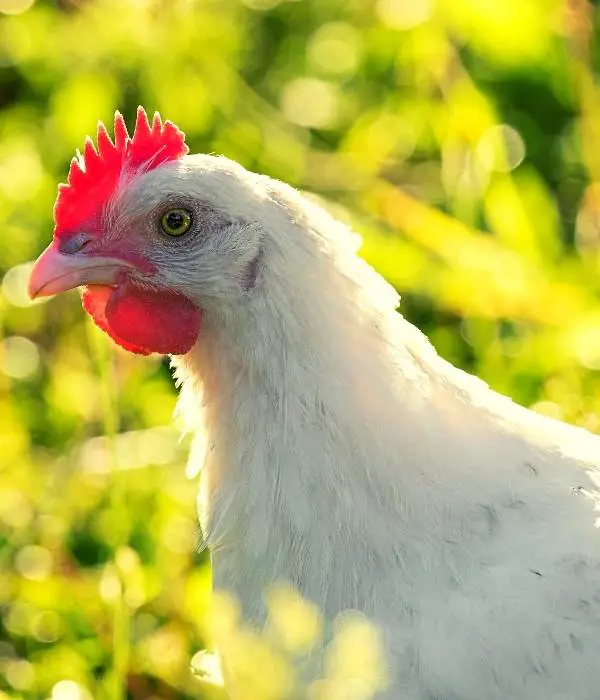
Bresse chickens use less packed feed and like to free-range for natural stuff in the garden and backyard, which gives their meat a unique flavor.
The benefits of raising Bresse chickens are below:
1. Excellent meat quality: Bresse birds are prized for their soft, delicious meat. Since Bresse chicken meat is expensive, raising them for meat is profitable.
2. Egg production: Bresse chickens produce many eggs yearly with a rich, yellow yolk that chefs and home cooks prize.
3. Good foragers: Due to their foraging nature, these chickens help reduce pests, unwanted grass, and plants in your yard or farm. They also need less packed feed due to their high foraging minds, lowering feed costs.
4. Friendly temperament: Bresse chickens are social and funny with their owners and coopmates. So, it’s easy for you to raise them.
5. Hardiness: Bresse chickens are hardy ones. The chickens of this breed can easily manage themselves in various weather and climate conditions. So, they are suitable for various countries.
6. Beauty: Bresse chickens have a neat appearance and stunning blue legs. They will look like gems with your other backyard flock.
Bresse Chicken Hen Eggs Laying Age, Count, Egg Size, and Egg Color
Bresse hens start laying eggs at about 5-6 months, depending on diet, habitat, and genetics.
The Bresse hens lay 250 eggs yearly, peaking in their first two years.
Bresse chicken eggs are medium-sized and white in color. Due to their varied natural diet from foraging, birds’ yolks are rich and golden.
For their flavor and culinary value, Bresse chicken eggs are valuable.
Bresse Chicken Weight and Size of Hens and Roosters
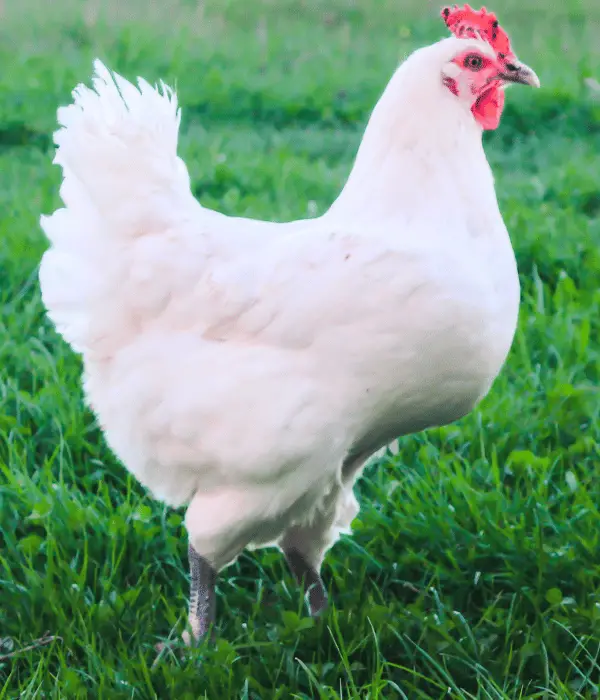
Bresse chickens weigh 4-6 pounds for hens and 6-8 lbs for roosters.
The birds’ compact, muscular build improves their meat quality and look.
Bresse birds are usually grown for meat and slaughtered at 4-6 months of age.
The birds will weigh less than full-grown chickens at this age but still provide soft, tasty meat valued in the culinary industry.
Raising Bresse Chicken Chicks and Their Appearance
Bresse chicken chicks are small and cute, with silky, downy feathers in white, black, blue, or gray.
Their blue legs, red comb, and wattles will become identifiable as they mature.
Bresse chicks need a clean, warm, and safe brooder to grow and develop.
Use a heat lamp and check the temperature to keep it within the age-appropriate range during brooding.
To help them grow, provide clean water and high-quality chick starter feed.
Feeding Bresse Chickens
Feeding is key to Bresse hens’ high-quality meat. The birds in Bresse, France, eat grains, insects, worms, and other natural food.
This diversified diet gives their meat a unique flavor and quality.
Raising Bresse hens requires a nutritious, balanced diet. A mix of cereals like corn, wheat, and barley and protein sources, including insects, worms, and pasture.
They also eat fresh fruits, vegetables, and greens to receive vitamins and minerals.
Free-ranging and foraging Bresse hens can mimic their natural diet and improve meat quality. To ensure proper nourishment, they need additional feed.
Housing and Shelter for Bresse Chickens
You can avoid external predators and bad weather by keeping your Bresse chickens in a closed and safe area.
An adequately ventilated chicken coop, a suitable roosting area, and nesting boxes are essential to their health.
Nothing is better than free-range chickens living in a large area where they can forage, play, and look for bugs.
The Bresse flock needs a secure, fenced daytime range for their safety and mental stimulation.
Keep Bresse chickens in a closed coop with a camera setup to protect them from nighttime predators. Cleaning and maintaining their coop periodically reduces waste and infection.
Health and Disease Management for Bresse Chickens
Like other poultry breeds, Bresse chickens can get parasites, respiratory illnesses, and stomach disorders.
Health checks, correct housing, and a balanced feed will help your Bresse chickens live comfortably and avoid disease.
When your Bresse chicks get sick, consult a vet for the best treatment. Vaccinations and deworming may be suggested to protect your flock from certain illnesses.
Cost and Quality of Bresse Chicken
Bresse chicken meat is one of the world’s best poultry meats because of its tenderness, flavor, and richness.
Due to the birds’ varied diet and energetic, free-ranging lifestyle, Bresse chicken meat tastes unique.
Bresse chicken meat sells several times more than regular chicken meat due to its high quality.
Backyard poultry lovers and small farmers can profit from raising Bresse chicks.
Where Can You Buy Bresse Chickens in The USA?
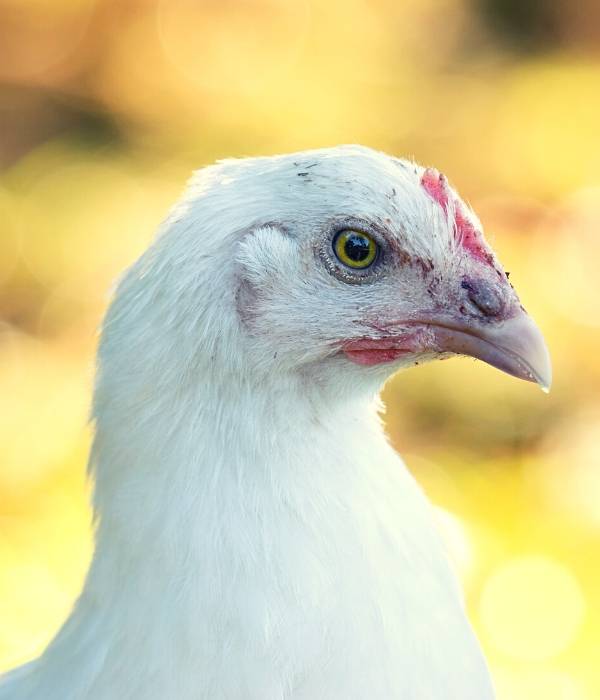
The USA has many Bresse chicken hatcheries and breeders selling chicks, eggs, and adults.
You must buy Bresse chicks from reputed hatcheries and breeders.
Many US hatcheries and breeders sell Bresse chicks, hatching eggs, and adult chickens.
Online Bresse chicken sellers in the US include Greenfire Farms, Meyer Hatchery, and Cackle Hatchery.
This helps you buy healthy, high-grade birds that meet breed appearance and meat quality standards.
Bresse chicks are available from several US hatcheries. Bresse Farms Rare Breed Chicken Hatchery is recommended.
This hatchery sells day-old chicks, juveniles, starting birds, poultry shipping boxes, and medications.
Due to an egg shortage, there is a high demand for Bresse chickens and a queue for all breeds and eggs. The minimum order is four chicks for local pickup and five for shipping.
To make an informed hatchery or breeder choice, study, read reviews, and ask questions.
Selecting the Best Bresse Chicken Breed?
When choosing Bresse chickens for your flock, examine their look, health, and disposition.
Look for birds with blue legs, red combs, and wattles that fulfill the breed’s color, size, and physical criteria.
Keep the birds healthy and free of discharge, lethargy, and challenging respiration.
A respectable breeder or hatchery can provide health history, immunizations, or treatments for the birds.
Finally, the birds’ attitude can affect their compatibility with your flock and your enjoyment of rearing them.
Bresse chickens are friendly and social, but their personalities differ.
Where are Bresse Chickens from?
Traditional Bresse chickens have been developed in Eastern France for centuries.
The breed’s world-renowned meat quality is due to the region’s climate, soil, vegetation, and centuries of selective breeding.
France restricts the breeding, production, and marketing of Bresse chickens.
Only chickens raised in the Bresse region and satisfying particular specifications can be sold as “Bresse” chickens, ensuring the breed’s quality and originality.
Cost of Bresse Chickens
Age, sex, and source affect Bresse chicken prices.
Day-old chicks cost $10–30, while adult birds cost $50–100 or more, depending on age and reproductive status.
High meat quality and restricted supply make Bresse chickens more expensive than other varieties.
The cost of importing Bresse hens from France and the breed’s unique breeding and production needs raise its price.
Why Is Bresse Chicken Expensive?
Due to its quality, flavor, and texture, Bresse chicken is one of the world’s best poultry meats.
The breed’s free-ranging lifestyle, natural food, and genetics make it expensive.
French Bresse chicken production and marketing are strictly regulated, which might raise their price.
Only chickens raised in the Bresse region and satisfying particular specifications can be sold as “Bresse” chickens, ensuring the breed’s quality and originality.
Conclusion
Farming Bresse chickens can be profitable and satisfying for backyard poultry enthusiasts and small farmers.
Bresse chickens have various advantages over other chicken breeds, including their high meat quality, unusual appearance, and amiable demeanor.
When rearing Bresse hens, diet, housing, and health management must be considered.
This guide’s detailed instructions will keep your Bresse chickens healthy and happy.


